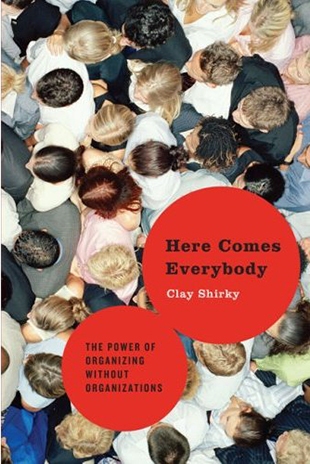Clay Shirky writes, teaches, and consults on the social and economic effects of the Internet, and especially on those places where our social and technological networks overlap. He contends that a change in human affairs is taking place thanks to the Internet and other burgeoning technologies allied to it. This fascinating book contains many examples of this revolution.
A woman leaves her phone in a cab and in ten days she manages to find it relying on the sleuthing of some friends, a MySpace page, a personal website, and the Digg It program. An airline passenger enlists the support of other disgruntled passengers and organizes them into a group that proposed an Airline Passengers' Bill of Rights. The world's largest encyclopedia grows day by day as people around the globe contribute to it. Citizens with camera phones document tragedies and disasters when they happen. The government in Belarus is worried about youth who have been able to organize spontaneous protests, and the Catholic Church is being challenged by self-organized lay groups. What does this all mean?
Shirky sums up:
"We now have communications tools that are flexible enough to match our social capabilities, and we are witnessing the rise of new ways of coordinating action that take advantage of that change. These communications tools have been given many names, all variations on a theme: 'social software,' 'social media,' 'social computing,' and so on. Though there are some distinctions between these labels, the core idea is the same: we are living in the middle of a remarkable increase in our ability to share, to cooperate with one another, and to take collective action, all outside the framework of traditional institutions and organizations."
Shirky takes a hard look at weblogs and the mass amateurization of efforts once reserved for media professionals via such sites as YouTube. He examines the collaborative production of Wikipedia, the collective action of self-organized lay groups in the Catholic Church, and the social networks which attempt to create a sense of local community in a dispersed culture. He helps us see that many more and quite varied experiments in new social forms are going on every day and that this signals new possibilities for connections with others and for the transformation of our private and public lives.
